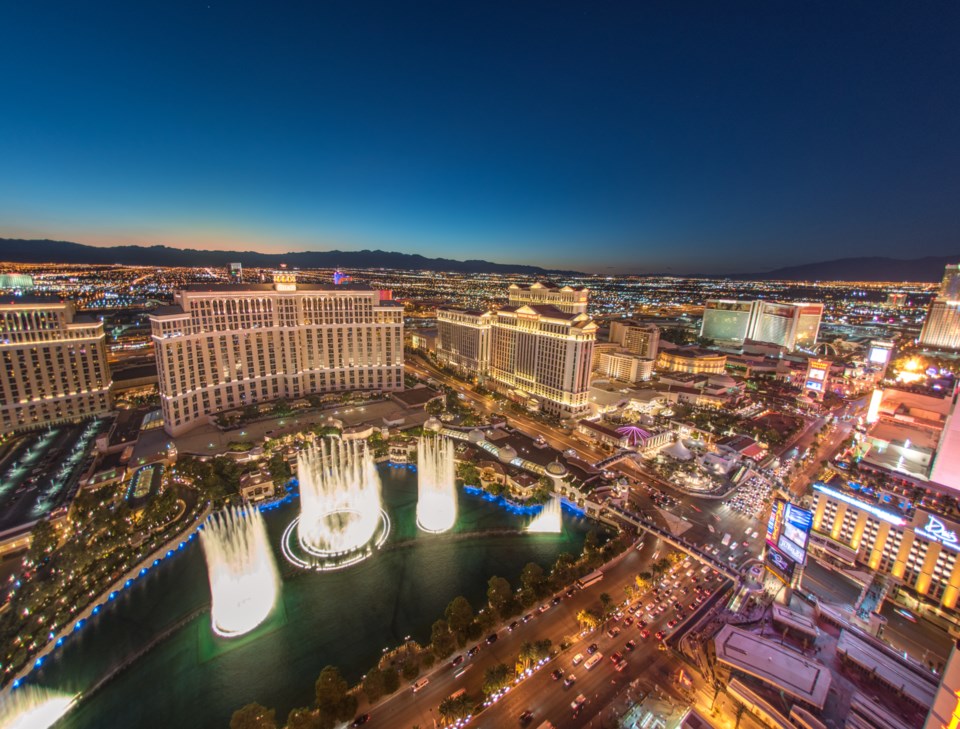This past weekend, the first-ever F1 Las Vegas Grand Prix raced through the streets of Sin City, the culmination of months of planning and construction efforts—and at a cost that reportedly far outweighed the initial estimated budget of about $500 million.
Those watching on TV likely only saw the grand spectacle—the slick, speeding cars against the iconic LED backdrop of the Las Vegas strip at night.
But the reality on the ground for locals was anything but glamourous in the months leading up to the big day.
“This race has made our lives a living hell,” said one cocktail server at a popular strip casino, in an interview with online news site The Messenger.
The woman said her 25-minute commute had doubled and often tripled since race prep started.
“They started road work in April. They’re telling us they might not be completely done with the teardown until just before New Year’s Eve. And then what? Las Vegas is going to be back to normal for a few months before they get ready for the next race? Is this our new reality?”
It is for the next decade, at least, after officials entered into a deal with F1 earlier this year to host the race in Vegas annually for the next 10 years.
That’s life as a local in a tourist town—sacrificing personal convenience for the privilege of living somewhere so desirable.
Were the wants and needs of Las Vegas locals taken into account when the contracts were inked? Or were officials blinded by, ahem, other priorities?
According to the Associated Press, the event brought in 315,000 people over four nights and generated $1.2 billion of economic activity in the area—a figure Clark County officials will likely point to every time they hear from grumbling locals.
The parallels to Whistler (Ironman, anyone?) are evident. As is the underlying conflict.
Purpose-built destinations like Las Vegas and Whistler are faced with a unique dilemma, in that their raison d’etre is to attract tourists and their money—but officials also have to make decisions with the best interests of locals at heart, lest they find themselves out on their ass after the next election.
Indeed, peer into the local politics of any of the world’s major tourist destinations, and you’re likely to see some variation of the same discussion: too many visitors, not enough thoughtful management, and locals lost somewhere in the shuffle.
Take Miami, where there are 1,641 tourists for every 100 locals—the world’s highest tourist-to-local ratio, according to Business Insider (Vegas is second with 993 tourists for every 100 locals).
According to NPR, crushing numbers of tourists are having dramatic impacts on Florida’s marine environment, while the state’s destination marketing organization, Visit Florida, pursues a goal of becoming the No. 1 travel destination in the world.
Some Florida locals, like Chad Crawford, are pushing back.
Crawford told NPR the state gets so hooked on out-of-state and international tourism that it ignores its own residents, emphasizing that for out-of-state or international tourism to continue, Florida needs what it pitches: a pristine, beautiful environment.
“We wanted to be the most traveled-to destination,” he said. “It should have been, ‘We want to be the best.’”
Sound familiar?
In Whistler, where we have 143 tourists for every 100 locals, we are fortunate to be somewhat ahead of the curve on this discussion, even if concrete measures to achieve true balance aren’t happening fast enough for some.
The importance of Whistler locals to the tourist economy was highlighted in a place-branding exercise undertaken by Tourism Whistler (TW) in 2019.
Through that project, TW wanted to “really confirm the characteristics and the local spirit of who Whistler truly is,” said TW president and CEO Barrett Fisher at the time. “And why? Because we believe it critically important that a healthy local community will bridge to a vibrant tourist economy. You need both working in tandem.”
The makeup of that community may have shifted somewhat in recent years due to COVID and changing economics, but the underlying sentiment remains solid.
But even with that early acknowledgement, achieving true, sustainable balance for Whistler will take serious effort—a fact not lost on local officials.
In recent years, the Resort Municipality of Whistler has attempted to address this reality head-on through its Balance Model Initiative, which, in mid 2022, predicted more visitors, more residents, increased workforce shortages and 50-per-cent more traffic congestion in Whistler by 2040.
The initiative went mostly quiet in 2023, but Whistlerites will hear more in 2024.
“We are currently working with a consultant to conduct some methodological updates of the Balance Model,” an RMOW communications official said in an email.
“The goal is to ensure it is optimized for our current and future demands of the model, and how it supports our strategic planning and understanding of Whistler’s carrying capacity. This work is underway and will continue through Q1 of 2024. We will be sharing updates when sufficient internal quality assurance has been conducted on the new outputs, likely in Q2 of 2024.”
Being a local in a tourist town means accepting that you won’t always be in complete control of your logistical destiny—but it’s reassuring to know the RMOW is alive to resident concerns.
Taking it a step further, Whistler’s mayor and council identified “smart tourism” as one of four key priorities for the council term. Through that initiative, RMOW staff will look to other global tourism destinations to see how they effectively manage visitor volumes.
Let’s hope they also take a good long look at what the locals in those places are saying.




